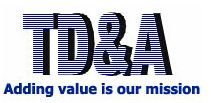
1. Introduction
As food safety becomes an increasing global concern, organizations and businesses within the food supply chain must implement a strict management system to ensure product quality and safety. ISO 22000 is the international standard that provides a comprehensive management framework for effectively controlling food safety hazards.
So what is ISO 22000? What are its benefits and structure? Let's explore the details in the article below.
2. What is ISO 22000?
ISO 22000 is an international standard developed by the International Organization for Standardization (ISO) that specifies the requirements for a Food Safety Management System (FSMS). The current version is ISO 22000:2018, which is designed to be applicable to any organization in the food supply chain — from farms and food processing factories to restaurants, supermarkets, and transportation services.
This standard integrates the principles of HACCP (Hazard Analysis and Critical Control Points) with system management requirements similar to those in ISO 9001.
3. Versions of ISO 22000
- ISO 22000:2005 – The first edition
- ISO 22000:2018 – The current and latest version
4. Who Can Apply ISO 22000?
ISO 22000 is applicable to all organizations involved in the food chain, including:
- Farms and agricultural cooperatives
- Food and beverage manufacturing or processing companies
- Food packaging suppliers
- Storage, transportation, and distribution units
- Restaurants, hotels, and industrial kitchens
- Retailers, supermarkets, and food stores
- Cleaning service providers and suppliers of food additives or chemicals
5. Benefits of Implementing ISO 22000
Ensure Food Safety
ISO 22000 helps identify, control, and prevent biological, chemical, and physical hazards in food, ensuring that the final product is safe for consumers.
Enhance Customer Trust
ISO 22000 certification enhances brand reputation and makes it easier to enter both domestic and international markets—especially supply chains with strict food safety requirements.
Improve Management Efficiency
Implementing ISO 22000 helps standardize processes, reduce errors, boost operational efficiency, and minimize unnecessary costs.
Comply with Legal Requirements
The standard supports organizations in complying with national and international food safety regulations.
6. Structure of ISO 22000:2018
ISO 22000:2018 is built based on the High-Level Structure (HLS), aligning it with other ISO management system standards such as ISO 9001 and ISO 14001. It includes 10 main clauses:
- Scope
- Normative references
- Terms and definitions
- Context of the organization
- Leadership
- Planning
- Support
- Operation (including HACCP and prerequisite programs - PRPs)
- Performance evaluation
- Improvement
7. What Is the Difference Between ISO 22000 and HACCP?
- HACCP is a widely used hazard control system focusing on seven key principles to ensure product safety.
- ISO 22000 incorporates all HACCP principles and expands upon them by adding system management elements such as leadership, risk planning, internal audits, and continual improvement — offering a more comprehensive food safety management approach.
ISO 22000:2005 is Food Safety Management system which has got similar structure to ISO 9001:2000 and based on the foundation of HACCP seven principles and general requirements of Quality Management system. When ISO 22000 is applied, ISO 9001:2000 is not needed any more.
ISO 22000:2005 includes eight (8) sections:
- Scope
- Reference standards
- Terms and definitions
- Food Safety Management system
- Management responsibility
- Resource management
- Planning and realization of safe product
- Validation, Verification and Improvement
Once applying ISO 22000:2005, the organization shall assure the implementation of prerequisite programs to constrain food hazards. These programs consist of requirements in shop designing, equipments, hygienic behaviors and shop, sterilization…
Once applying ISO 22000:2005, the organization shall establish a control system, including: processes, control procedures, supporting documentation…ISO 22000:2005 can be applied to all organizations within food provision flow: plant for growing (rearing), catching, processing, production or food services.

